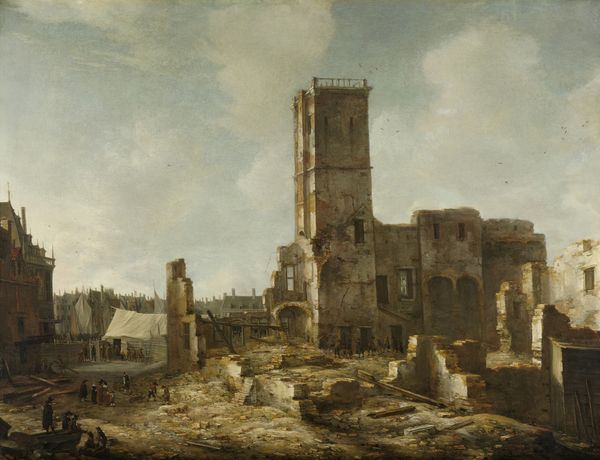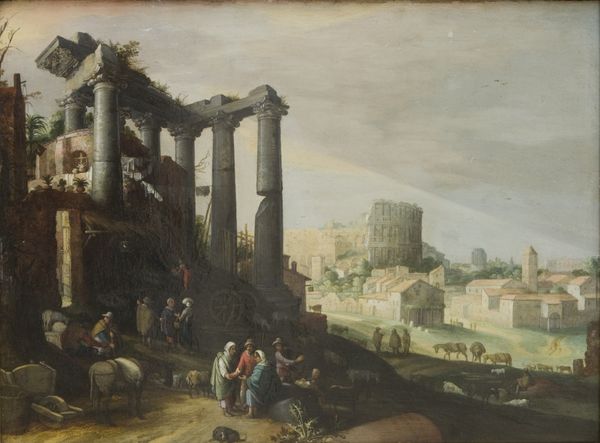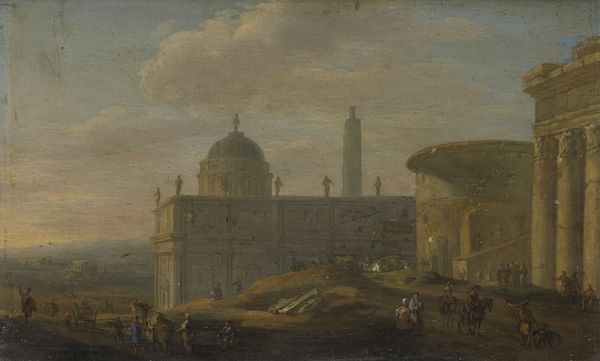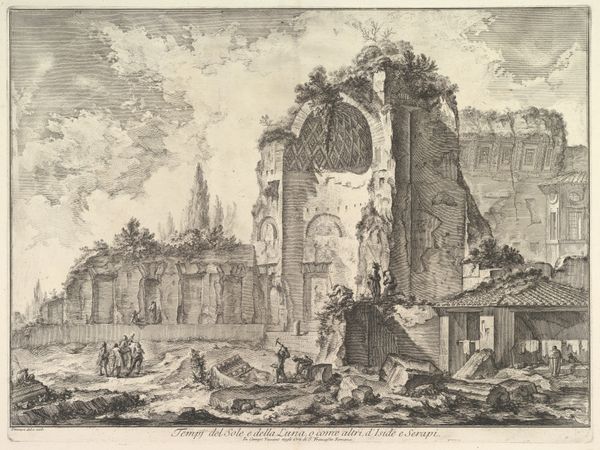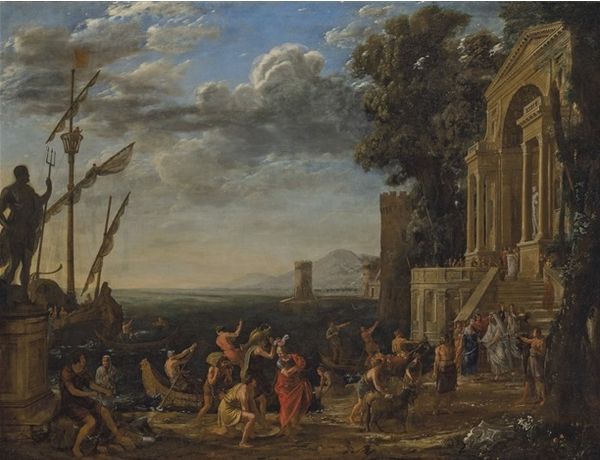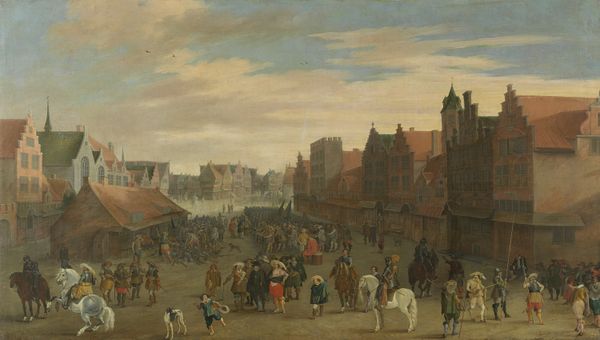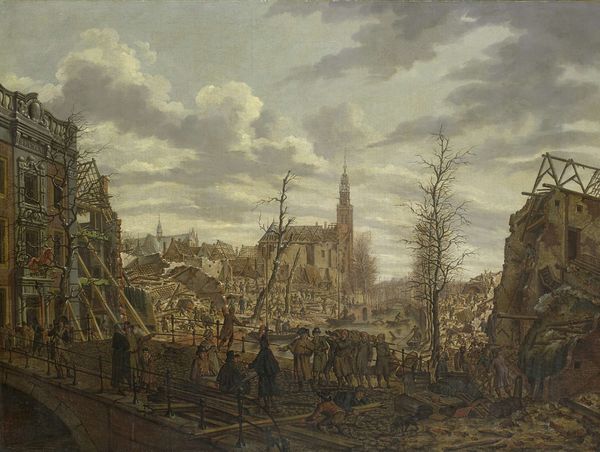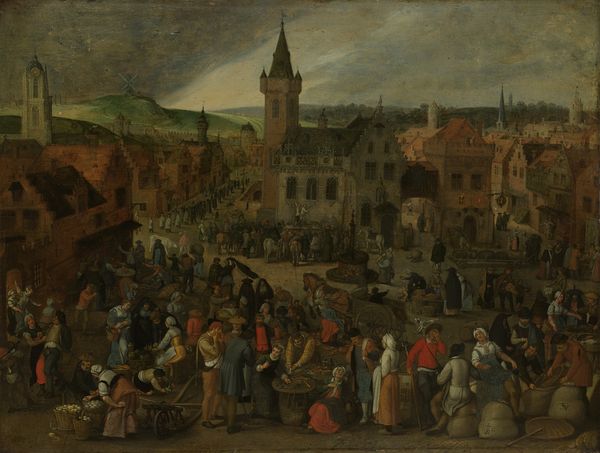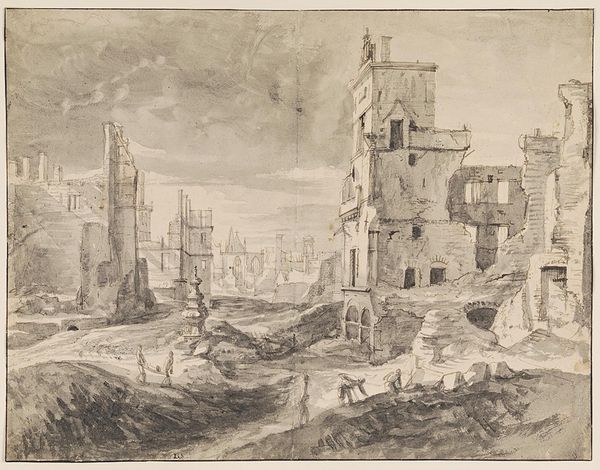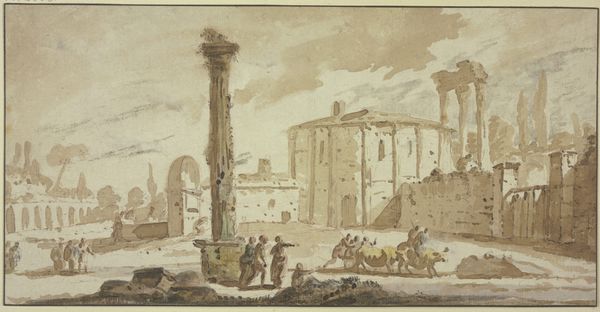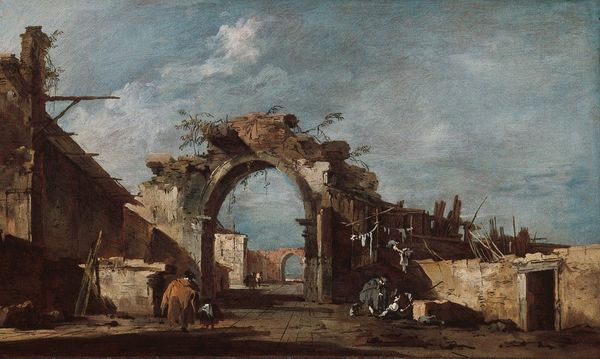
Dimensions: support: 648 x 952 mm frame: 865 x 1177 x 120 mm
Copyright: CC-BY-NC-ND 4.0 DEED, Photo: Tate
Editor: This is Richard Wilson's "The Inner Temple after the Fire of 4 January 1737," currently residing at the Tate. I find it quite sobering, a stark depiction of destruction, yet teeming with life. What do you see in this piece? Curator: A dance between ruin and resilience, wouldn't you say? Wilson captures not just the devastation but also the human flurry around it. The fire created voids, not just in the buildings, but perhaps in the social fabric. It's a study in contrasts: the permanency of stone versus the ephemeral nature of human endeavor. Does it strike you as a purely objective record, or something more? Editor: I hadn't thought of the "voids" that way, but it's definitely more than just documentation. There's a palpable sense of loss, but also a sort of bustling reorganization. Curator: Exactly! It's as if Wilson is asking: what do we rebuild, and how? It makes you ponder, doesn't it, the stories held within those lost stones, and the new narratives being written in their place. Editor: It certainly does. I’ll never look at historical paintings the same way again.
Comments
tate 6 months ago
⋮
http://www.tate.org.uk/art/artworks/wilson-the-inner-temple-after-the-fire-of-4-january-1737-n02984
Join the conversation
Join millions of artists and users on Artera today and experience the ultimate creative platform.
tate 6 months ago
⋮
This picture records the devastation caused by a fire that destroyed Crown-Office Row in the Inner Temple during the night of 4 January 1737, fortunately without loss of life. The group in the centre includes Frederick, Prince of Wales (in blue, wearing the Garter star), who had sent fifty soldiers to help the firemen and later came to inspect the scene himself.Fires were a regular hazard in London and were fought with water pumps like the one just visible in the left foreground, It had to be filled by hand from the nearby Thames, which was at low tide when the fire began. This added delay, combined with a stiff breeze, made this conflagration more extensive than usual. Gallery label, February 1997
